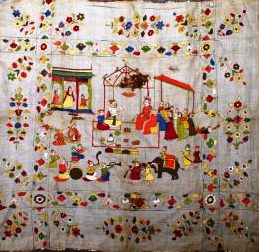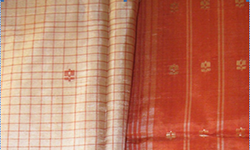Crafts, Handlooms, Art, Craftspersons/ Artisanal, Interviews, Conversations
Camel Bone Carving: In Conversation with Mushtaq Ahmed
George, Ligi
March, 2019
Mr. Mushtaq Ahmed learnt the craft of camel bone carving from Mr Abdul Khalib, a renowned carver. He has diversified and applied their skills to working with wood. He received a Merit certificate in 1994. Ligi George is in conversation with the craftsman.
Why was ivory carved in earlier times?
The primary reason is aesthetics. Work on ivory looks good. It is also a wonderful, interesting and easy medium to work in.
What is the difference between ivory & camel bone?
There is a greater demand for ivory then camel bone - a sort of unstated hierarchy between mediums. People will select ivory pieces but the same work on camel bone doesn't have such a demand. People don't regard camel bone the same as ivory. Some of the piece will take 6 month to complete.
Working with ivory is easier than bone. Also ivory, because of its milky pure whiteness doesn't need to be cleaned or polished. Ivory has to be stored in a cool place in summer because it breaks easily keep in hot weather so work has to undertaken in a cooled atmosphere.
But now, with restrictions on ivory carving we have adapted to newer, easily procurable raw materials like camel bone and wood. As the camel is a big animal and has large bones it became a valid substitute. According to the carve, when they have to make big pieces the removed extra parts are cut down to make small products like bead for necklaces, different type of clips, lockets, paper cutting knife, scissors, birds, book mark etc.
What is the Process & Technique of on Camel bone carving?
This is a preview. To access all the essays on the Global InCH Journal a modest subscription cost is being levied to cover costs of hosting, editing, peer reviewing etc. To subscribe, Click Here.



